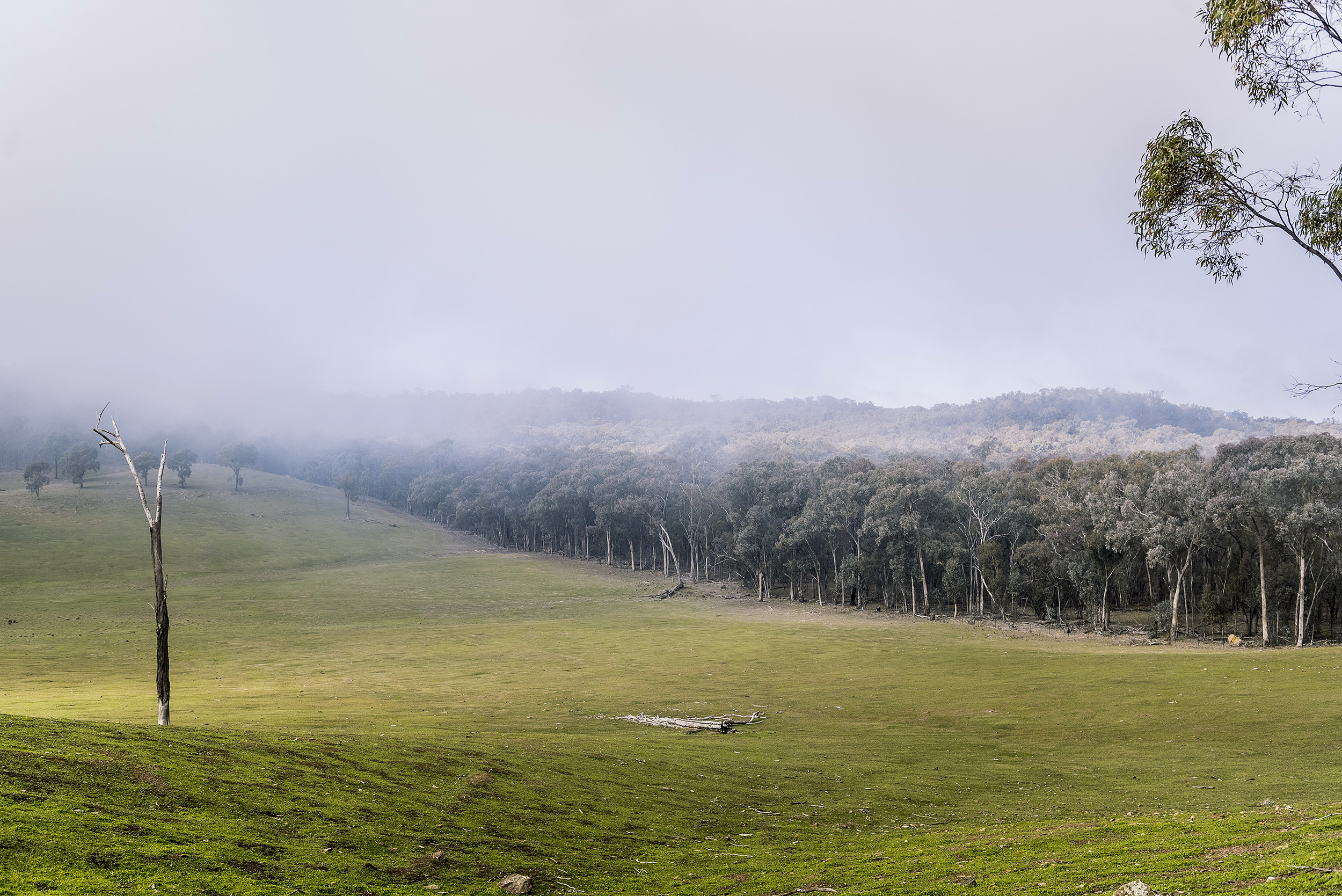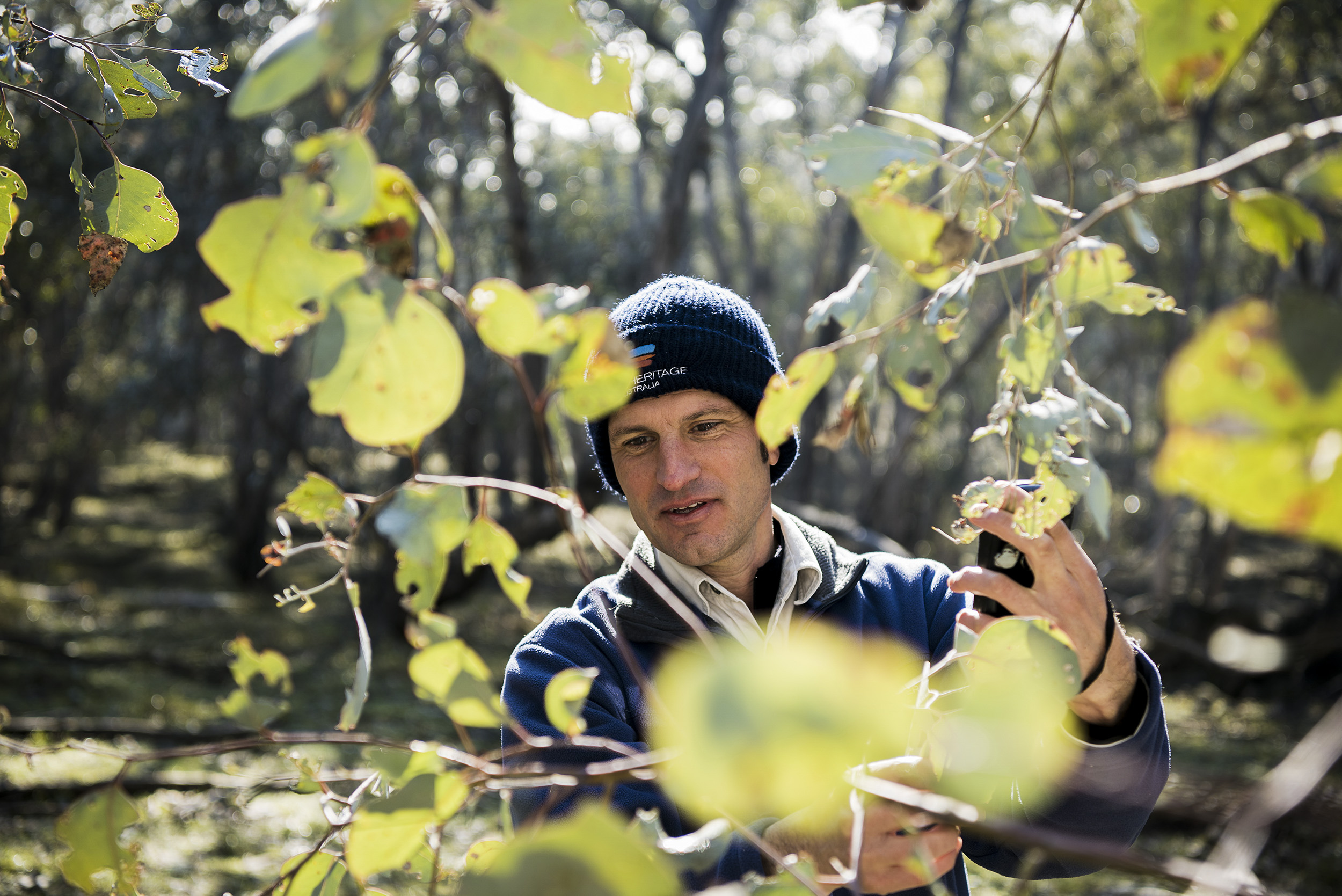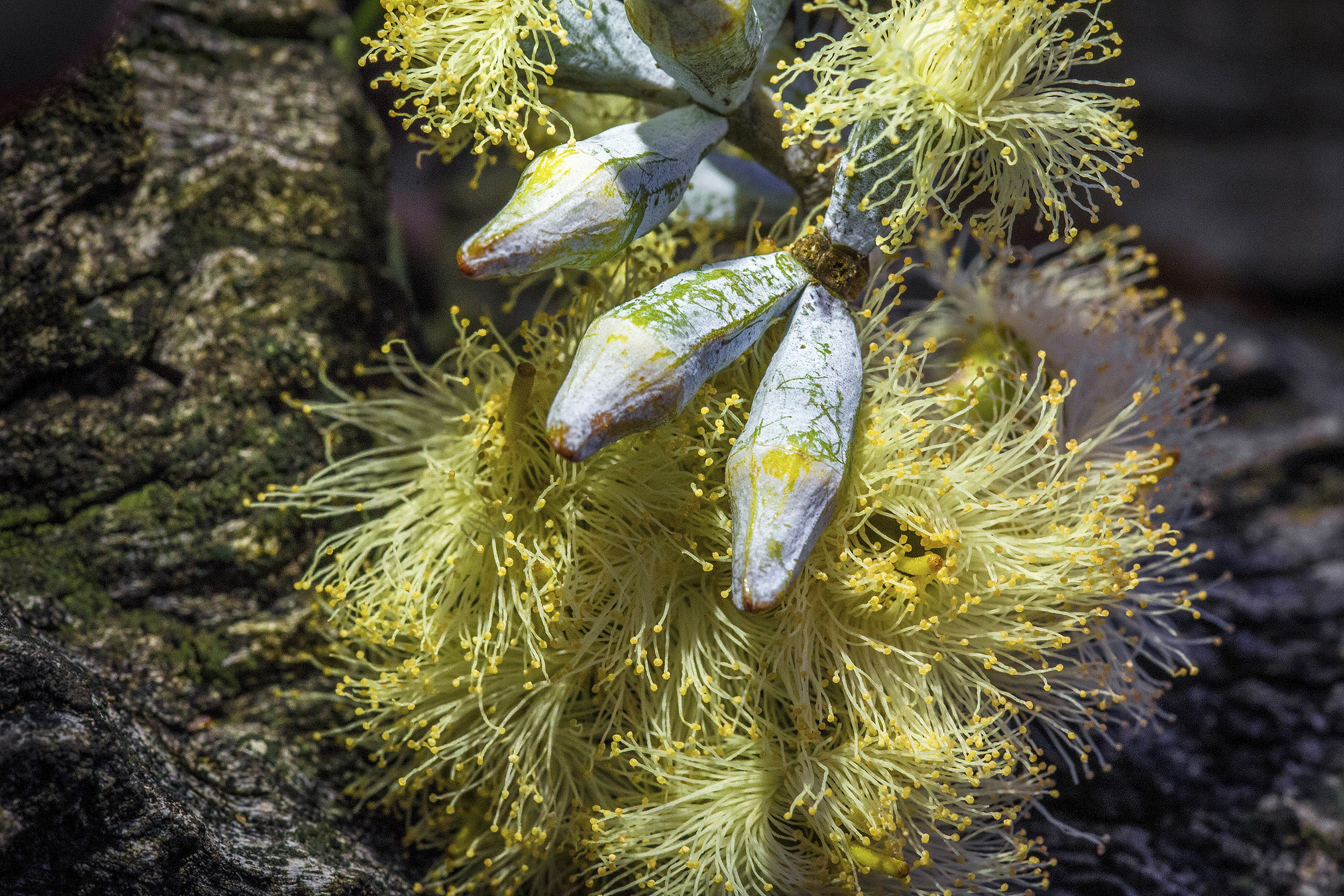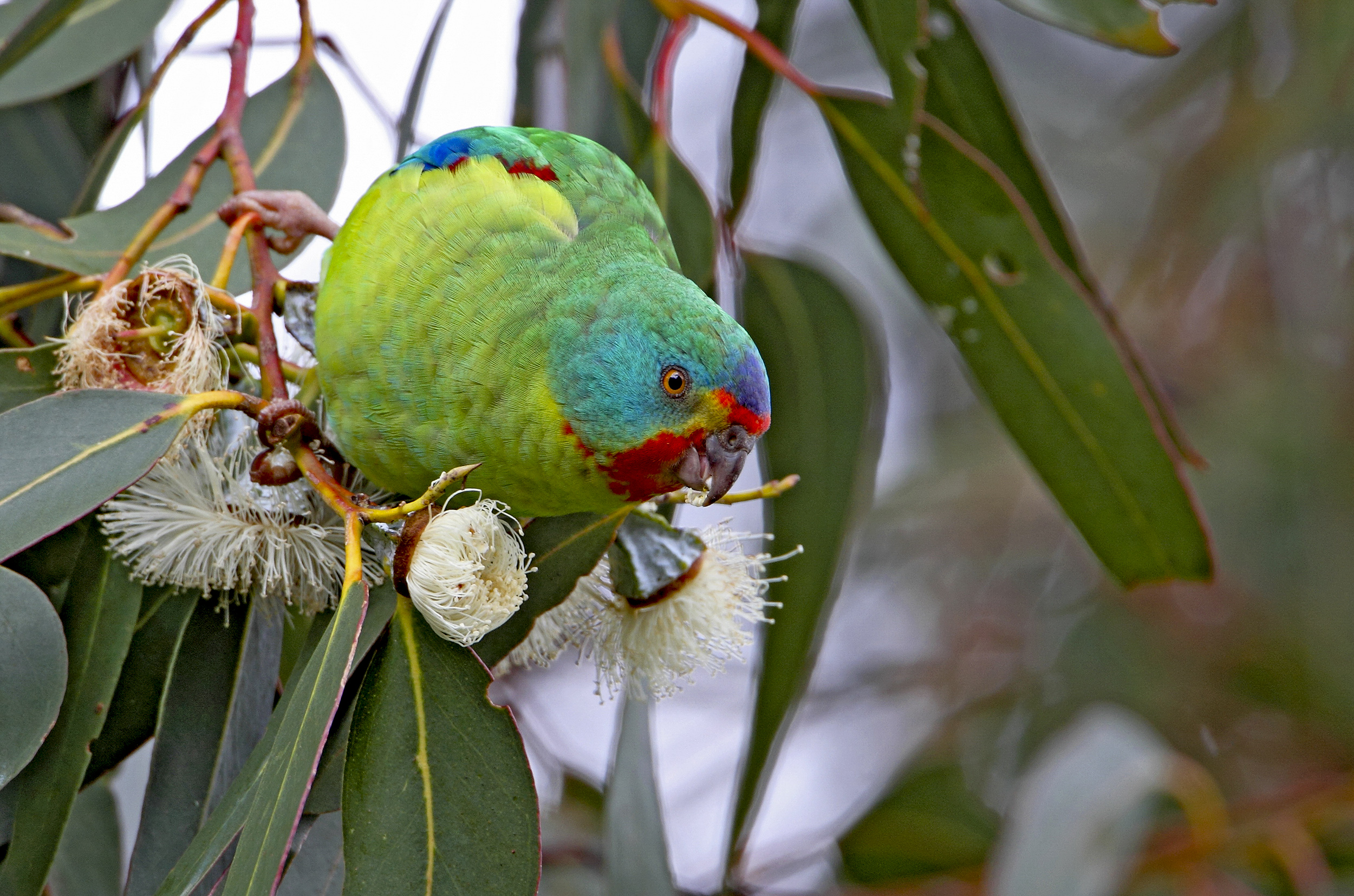Swift Parrot. Photo by Chris Tzaros.
Grassy woodland habitat essential for this critically endangered bird
Bush Heritage Australia is delighted to announce that up to 60 Swift Parrots have been seen feeding at their Tarcutta Hills Reserve on Wiradjuri country in southern New South Wales.
Bush Heritage purchased Tarcutta Hills in 1999 – almost two decades ago – and has been slowly improving the health of the bush. The Grassy White Box Woodland found there is intact but elsewhere in Australia it is one of the most highly fragmented and poorly protected ecological communities.
Tarcutta Hills is also vital habitat for the critically endangered Swift Parrot, which migrates north from Tasmania during the winter months to forage on flowering eucalypts in south-eastern Australia. Dr Debra Saunders, Swift Parrot expert and ANU researcher, spotted the birds at the reserve last moth.

Next door to Tarcutta Hills Reserve Bush Heritage Photo by Annette Ruzicka
“This is an incredibly exciting sighting,” said Dr Matt Appleby, Bush Heritage senior ecologist for the South-East region. “By protecting the woodlands on Tarcutta Hills, we’ve ensured that these beautiful little birds have some habitat to return to each year.”
Sadly, it’s estimated there are less than 1,000 Swift Parrot breeding pairs left in the bush. The birds are under severe threat from Sugar Gliders in Tasmania, who prey on the parrots, their chicks and their eggs.
“Their habitat is precious, so land clearing is also of major concern,” explains Appleby. “Since European settlement, around 90 percent of Australia’s temperate woodlands have been permanently cleared. That’s why it’s so important that we have Tarcutta Hills protected forever.”


(Left) Dr Matt Appelby Bush Heritage Photo by Annette Ruzicka and (Right) Ironbark flower Tarcutta Photo by Richard Taylor
Bush Heritage is monitoring the effect climate change is having on the landscape, and trying to future proof it by planting different provenances of eucalypt species that can withstand changed climate conditions. Dr Saunders is also using the latest drone tracking technology in order to shed new light on the bird’s winter movements.

Ironbark flower Tarcutta Photo by Richard Taylor.
Swift Parrot fun facts
- Swift Parrots make the huge 2,800 kilometre round trip from Tasmania to the mainland each year.
- One bird has been tracked travelling up to an incredible 88 kilometres per hour!
- Swift Parrots are almost always in the air or in trees and only come to ground to drink.
- While on the mainland their time is dictated by the supply of nectar and they become nomadic – spending weeks or even months at some sites and only a few hours at others.
- They are known for being noisy, active and showy birds.
- In flight, Swift Parrots are distinguished by their bright red underwings.
About Tarcutta Hills
Tarcutta Hills is a 432 hectare property 210km west of Canberra. It is home to more than 100 bird 100 bird species that forage and feed at the reserve, including: Brown Treecreepers, Little Lorikeets, Speckled Warblers, Painted and Black-chinned Honeyeaters, Hooded Robins and Diamond Firetails. Tarcutta Hills also protects animals like the Yellow-footed Antechinus, Tree Skink and Spotted Grass Frog, and plants like the White Cypress Pine, Handsome Flat-pea, Tick Indigo, Showy Copper-wire Daisy and Kurrajong.
